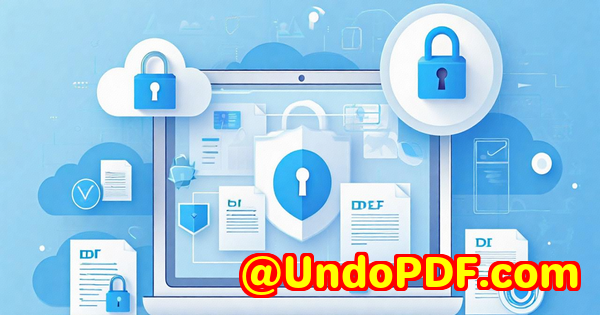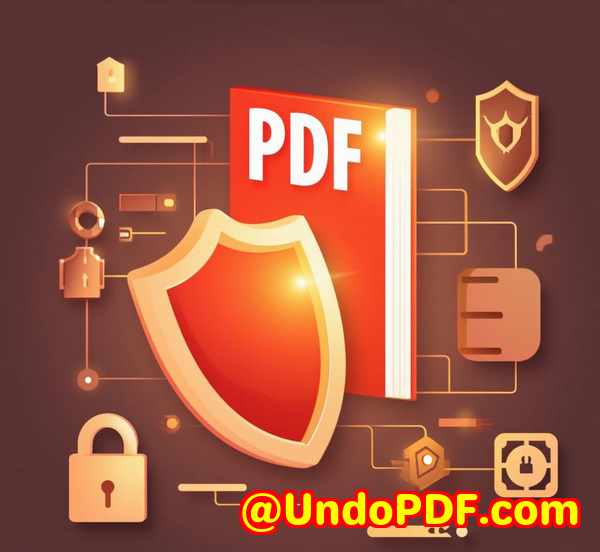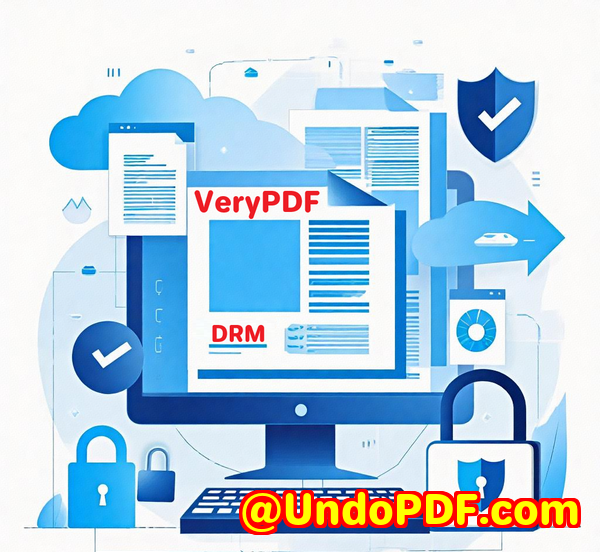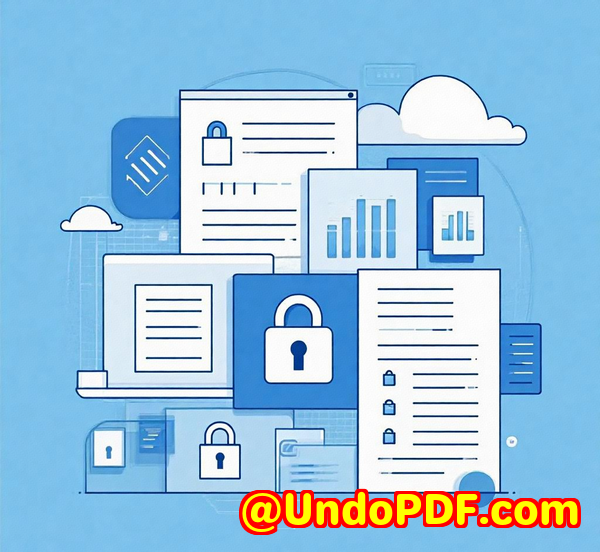How to revoke access to shared PDFs even after sending the link to multiple recipients
How to Revoke Access to Shared PDFs Even After Sending the Link to Multiple Recipients
Every time I had to share confidential PDFs with multiple clients or colleagues, I’d end up stressing over one question: what if someone forwards the link or passes the file on to someone they shouldn’t? You know the feelingsending sensitive documents out into the wild and losing control over who can see them or use them. It’s frustrating, especially when dealing with contracts, financial reports, or proprietary information. Traditional sharing methods just don’t cut it anymore.

That’s exactly why I turned to VeryPDF Secure PDF Sharing. This tool doesn’t just help you share PDFs; it hands you the reins to control and revoke access even after the files have left your hands. I’m talking about secure, dynamic sharing where you decide who gets to see what, for how long, and when it stops altogether. Here’s what I learned putting it through its pacesand why it might just be the fix you need.
What is VeryPDF Secure PDF Sharing and Who’s It For?
VeryPDF Secure PDF Sharing is a cloud-based SaaS application designed to give users complete control over their PDF documents whether they’re sending one file or hundreds.
It’s ideal for professionals and teams that deal with sensitive or confidential information:
-
Legal teams distributing contracts to multiple parties
-
HR departments sharing personnel files
-
Finance teams sending financial reports
-
Marketing agencies sharing exclusive campaign materials
-
Any business that needs to share proprietary documents securely
The product goes way beyond just creating shareable links. It’s built to stop unauthorised access, prevent copying, control printing, track usage, and revoke access instantly.
Key Features That Made a Difference for Me
1. Share PDFs via Secure Links with Password and DRM Controls
Uploading PDFs and sharing them via direct links is super easy. What sets this apart is how you can:
-
Add password protection to the link
-
Restrict who sees the document through private or unlisted sharing
-
Use Digital Rights Management (DRM) to enforce usage policies
For example, when I sent out sensitive contracts to several clients, I password-protected the links and set limits on how many times they could open or print the files. That alone saved me the headache of chasing down PDFs leaked to unauthorized parties.
2. Revoke Access Anytime Even After Sharing
Here’s the game-changer: with VeryPDF Secure PDF Sharing, I could revoke access to a document instantly, no matter who already had the link or downloaded the file.
That means if a contract was only supposed to be reviewed for a week, I could cut access the day after if the deal fell through.
Or, if an employee left the company, I could revoke their access to all sensitive PDFs without scrambling through emails or manual follow-ups.
It’s a relief knowing you have that power. No more “Oops, I forwarded it” nightmares.
3. Track How PDFs Are Used
The dashboard lets me see who opened the document, when, on what device, and even how many times it was printed.
This level of insight was eye-opening. For one client, I noticed a PDF was being viewed far more than expected a red flag that led to me checking in with the recipient for clarification.
Plus, I could export usage stats through Zapier, making it simple to consolidate reports and follow up strategically.
Why I Chose VeryPDF Over Other Tools
I’d tried other sharing options, like email attachments, Google Drive links, and even password-protected PDFs created with Adobe. But none gave me true control.
-
Email attachments are limited by size and impossible to revoke once sent.
-
Google Drive sharing links can be forwarded endlessly with minimal restrictions.
-
Adobe password protection is easily bypassed once the password is shared.
-
Many secure file sharing services require users to create accounts or install plugins, which complicates things for clients.
VeryPDF Secure PDF Sharing ticks all the boxes: no accounts needed for recipients, no clunky plugins, and military-grade encryption that locks files to authorised devices.
Real-World Use Cases Where This Tool Shines
-
Legal teams: Sharing contracts with multiple signatories, ensuring access expires once a deal closes.
-
HR: Sending confidential employee documents with printing restrictions.
-
Finance: Distributing quarterly reports to shareholders with detailed access logs.
-
Marketing: Sharing campaign assets with partners while controlling how and when files are used.
-
Education: Providing students with timed access to exam materials or coursework PDFs.
I found it particularly useful in client presentations where materials needed to stay under wraps until launch dates. The ability to update a PDF on the fly while the link remains the same was a nice bonus no need to resend new files every time there’s a tweak.
Why Revoking Access Is Critical
When you share a link to a PDF, you effectively lose control if the recipient shares it further. VeryPDF Secure PDF Sharing’s ability to revoke access no matter where the file ends up is a massive security upgrade.
Think about compliance needs, intellectual property protection, and cost savings from not having to reissue documents or chase down unauthorised copies. It also means you can confidently share sensitive content knowing you can pull the plug instantly if needed.
Final Thoughts Why You Should Try VeryPDF Secure PDF Sharing
If you’re still relying on basic sharing methods for sensitive PDFs, you’re taking a risk. From my experience, VeryPDF Secure PDF Sharing offers peace of mind with:
-
Strong encryption and device-based DRM that can’t be bypassed
-
Easy-to-use controls to share, track, and revoke access
-
Flexible options like password protection, QR codes, and branded links
-
Detailed usage tracking for better follow-up and security oversight
I’d recommend this to anyone who deals with large volumes of confidential PDFs and wants to stay in control lawyers, HR pros, marketers, finance teams, and more.
Give it a shot yourself start your free trial and see how much smoother and safer your PDF sharing can be: https://drm.verypdf.com/online/
Frequently Asked Questions (FAQs)
Q: Can I revoke access to a PDF after multiple people have received the link?
A: Yes. VeryPDF Secure PDF Sharing lets you instantly revoke access to a PDF for all or specific users regardless of how many people have the link.
Q: Does this tool require recipients to install any software?
A: No, recipients can open protected PDFs in any modern browser or supported PDF reader without extra software.
Q: Can I control printing and copying of my shared PDFs?
A: Absolutely. You can disable printing or limit the number of prints and prevent copying and screenshots.
Q: How does VeryPDF Secure PDF Sharing protect against link forwarding?
A: It uses DRM technology locking documents to authorised devices and can restrict viewing by location and device, preventing forwarded links from being misused.
Q: Is there a way to track how recipients interact with my PDFs?
A: Yes, you get detailed analytics including views, downloads, print logs, and device information for each shared document.
Tags / Keywords
-
Secure PDF sharing
-
Revoke access to PDFs
-
Control shared PDF links
-
PDF DRM protection
-
Protect confidential documents
Custom Development Services by VeryPDF
VeryPDF offers tailored custom development to fit your exact PDF and document processing needs across multiple platforms Windows, macOS, Linux, iOS, Android, and more.
Their expertise covers a broad spectrum including:
-
PDF, PCL, PRN, Postscript, EPS, and Office document processing
-
Advanced OCR and barcode recognition
-
Windows Virtual Printer Drivers for generating PDFs and images
-
Cloud-based document conversion and digital signatures
-
Document security, DRM, and access control technologies
If you have unique requirements, VeryPDF’s team can develop bespoke solutions integrating with your existing workflows. Reach out via their support centre at http://support.verypdf.com/ to discuss your project.
When it comes to securely sharing PDFs and staying in control of your sensitive documents, VeryPDF Secure PDF Sharing is the tool that turned my sharing nightmares into a smooth, manageable process. Try it out and see how easy secure sharing can be.



